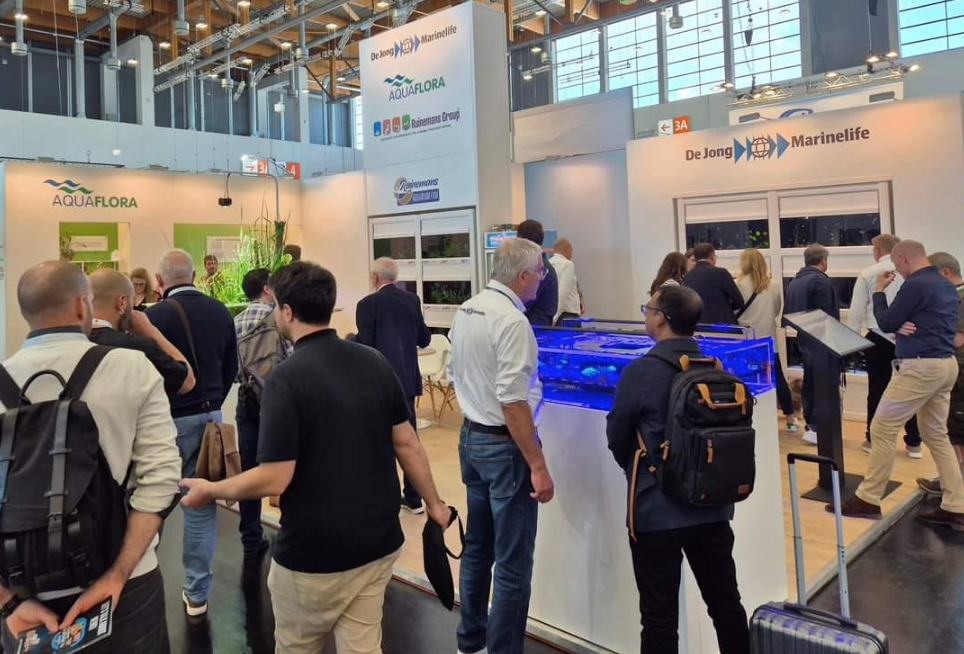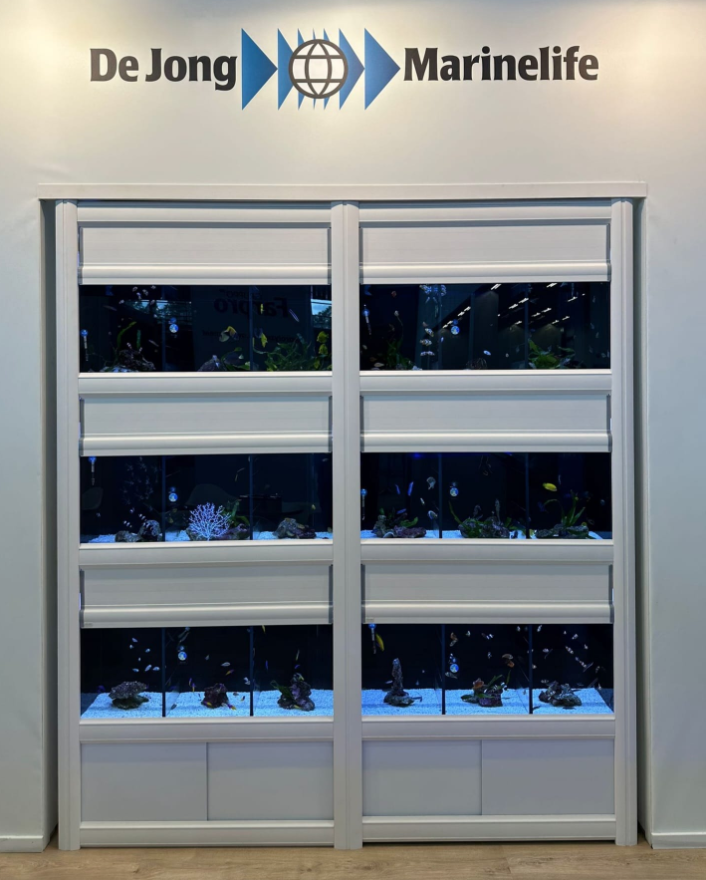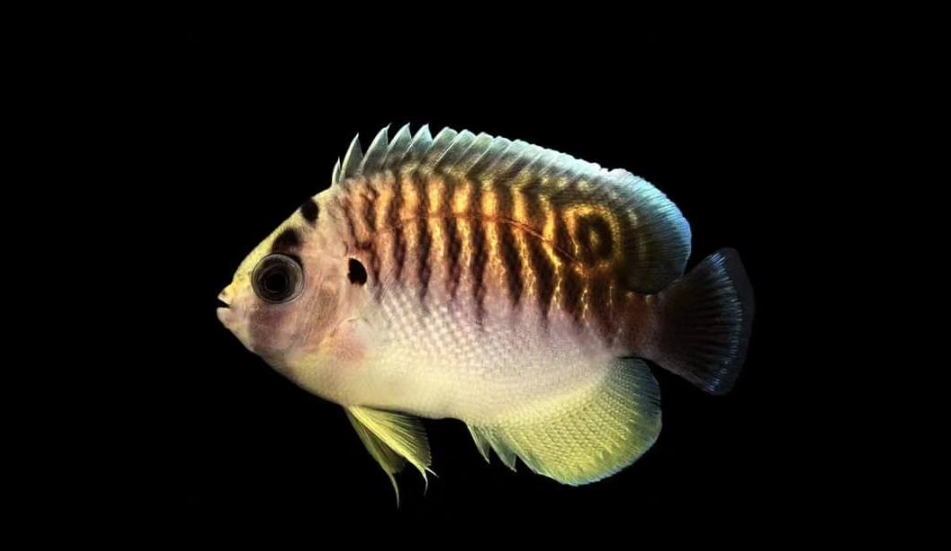Dutch marine wholesaler turned fish breeder De Jong made a bold statement on their stand at this year’s Interzoo, opting to omit the mega fish and coral display tank they are famous for in favor of a commercial fish rack only containing fish that have all been bred and raised in captivity.
The fish came from five captive breeding facilities at Biota, Bali Aquarich, ORA, Poma Labs, and De Jong’s own fish hatchery and coral farm. The featured fish ranged from tank bred common clownfish to dottybacks, filefish, seahorses, gobies, cardinalfishes, grammas, blennies, angelfish, tangs, batfish, and monos, and included rarities such as Centropyge interruptus, Gramma dejongi, Chaetodontoplus personifer x chrysocephalus and Hippocampus zosterae.

“We are thrilled by the overwhelmingly positive response to the captive-bred fish and cultured corals we showcased at our exhibit.” De Jong announced on tier social media.
“In recent years, we’ve invested significant time and effort in establishing our state-of-the-art fish hatchery and coral farm. The overwhelmingly positive feedback from our clients is incredibly energizing, serving as validation that we’ve made the right choice. We firmly believe that sustainability is the future of our beloved hobby.”
“At the exhibit, we displayed corals from our own De Jong Coralfarm, fish from our De Jong Fish Hatchery, and fish from breeders worldwide. We find it important to collaborate with other fish hatcheries worldwide to breed new species and exchange knowledge.”

We are all for sustainable wild collection, but at the same time we have spent the past three decades dreaming of what a captive-raised saltwater fish (and coral,) store could look like in the future, and De Jong gave the reefkeeping world a taste of that in Nuremberg last week. The full list of fish on show (and a shrimp,) is below:
De Jong Fish Hatchery
- Amphiprion ocellaris
- Pseudochromis aldabraensis
- Amphiprion frenatus
- Amphiprion sandaracinos
- Amphiprion percula
- Amphiprion ocellaris (Gladiator)
- Amphiprion ocellaris (Domino)
- Amphiprion ocellaris (Midnight)
- Amphiprion ocellaris (Snowflake)
- Amphiprion ocellaris (Snow Storm)
- Acreichthys tomentosus
- Monodactylus argenteus
- Pseudochromis springeri
- Cryptocentrus cinctus
- Hippocampus erectus
- Lysmata wurdemanni
- Pterapogon kauderni
- Centropyge interruptus
- Amphiprion ocellaris (Darwin)
- Calloplesiops altivelis
- Assessor flavissimus
- Hippocampus zosterae
- Pseudochromis indigo (dejongi)
- Amphiprion ocellaris (Black Wyoming)
- Pseudochromis fridmani
- Gramma loreto
- Meiacanthus mossambicus
- Amphiprion perideraion (Domino)
- Amphiprion milii
- Amphiprion omanensis
- Amphiprion ephippium
- Amphiprion nigripes
- Pseudochromis sankeyi
Biota
- Centropyge bispinosa
- Labroides dimidiatus
- Zebrasoma flavescens
- Dunckerocampus pessuliferus
- Amblygobius linki
- Gramma dejongi
- Scartella cristata
- Amblygobius phalaena
- Rainfordia opercularis
ORA
- Sphaeramia nematoptera
- Elacatinus evelynae
- Elacatinus oceanops
- Elacatinus puncticulatus
- Elacatinus figaro
- Meiacanthus oualensis
- Meiacanthus grammistes
- Meiacanthus kamoharai
Bali Aquarich
- Apolemichthys xanthopunctatus
- Zebrasoma xanthurum
- Apolemichthys xanthopunctatus X griffisi
- Pomacanthus navarchus
- Choerodon fasciatus
- Platax pinnatus
- Paracentropyge multifasciata
- Centropyge colini
- Pygoplites diacanthus
- Paracentropyge venusta
- Centropyge aurantia
- Pomacanthus navarchus
- Pomacanthus imperator
- Pomacanthus zonipectus
- Centropyge flavissima
- Chaetodontoplus personifer x chrysocephalus
Poma Labs
- Chaetodontoplus conspicillatus
- Apolemichthys kingi



